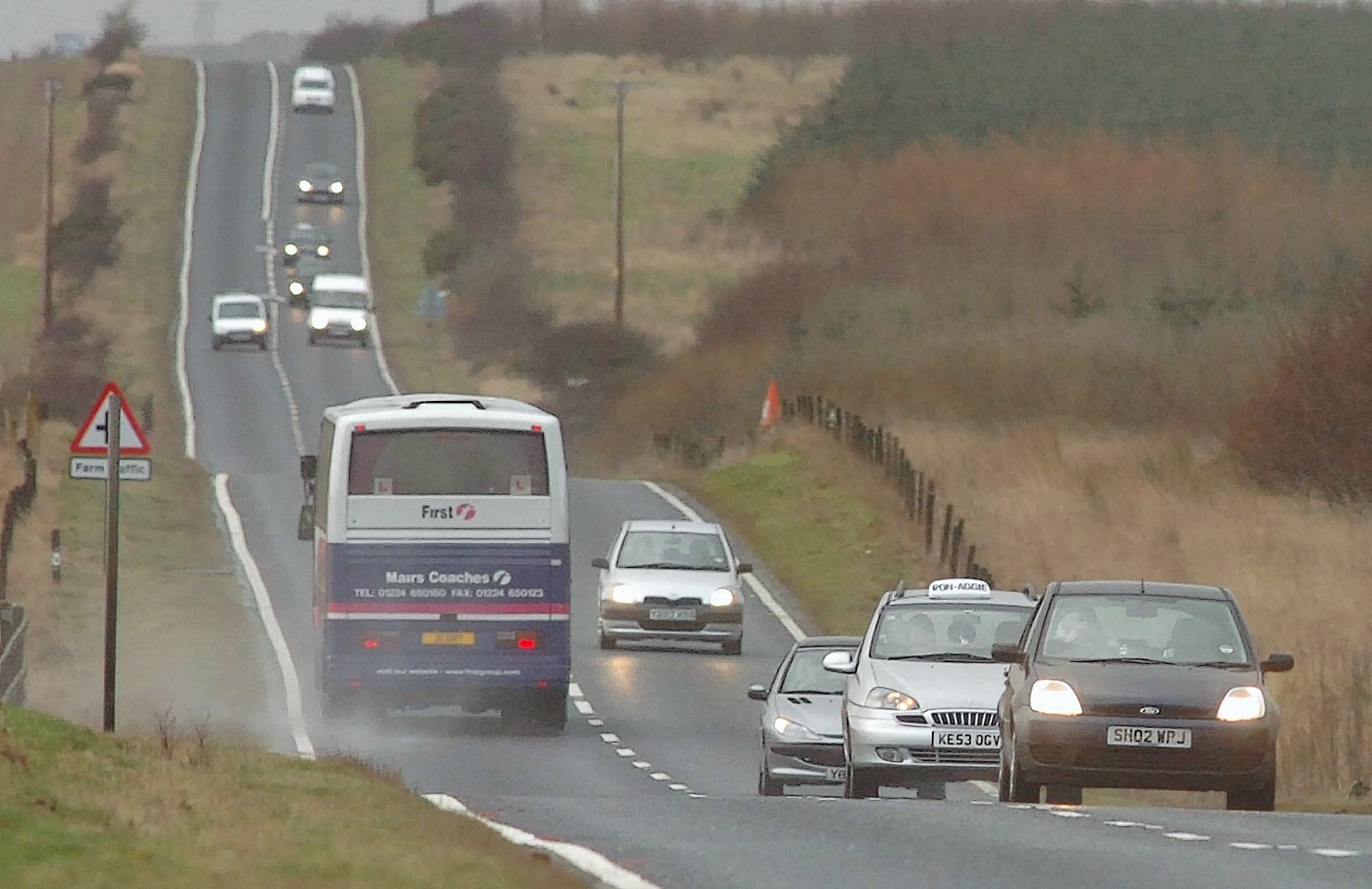Transport chiefs have revealed it could cost £300million to upgrade the north-east’s road and rail links.
Nestrans, the region’s transport partnership, is currently appraising options to improve journeys between Aberdeen, Ellon, Peterhead and Fraserburgh.
Now an interim report has divulged the cost and scale of the projects under consideration.
Initially, a list of more than 130 different options was drawn up and whittled down by the Nestrans team, as well as Aberdeen City and Aberdeenshire councils.
The most feasible ideas have been chosen and combined into two competing packages – road and rail.
The first would cost up to £305million, and would include dualling the A90 between Ellon and the Toll of Birness – for an estimated £113million – and introducing overtaking lanes along the remaining single carriageway stretches of the route.
The investment would also include a revamp of the notorious Toll of Birness junction to improve safety, at an additional cost of around £50million.
Alternatively, around £302million could be spent reintroducing railway lines across the north-east.
The first step would be an investment of between £130-£260million to bring back a “heavy rail service” between Dyce and Ellon. This project could pave the way for future development of the network to Peterhead and Fraserburgh – the two towns furthest from the national rail network.
Under both schemes, it is proposed that existing bus routes and park and ride infrastructure is upgraded to improve connectivity.
No funding has been identified at this stage but the appraisal work revealed today will shape any applications for future investment.
In his report to the Nestrans board, director Derick Murray states: “Businesses are mostly concerned about the impact on journey times due to the volume and movement of freight with a large proportion of this freight traffic being time-sensitive cargo.
“The current volume and movement of freight is impacting on journey times and roads based solutions are therefore considered to offer the greatest benefit here.
“The general population is more concerned about accessibility issues. Here the rail-based options are viewed as most important but there is a proportion which considers roads solutions to generate most benefit.”
The two rival packages are likely to spark a fierce debate between campaigners vying for future funding for both road and rail upgrades.
Green councillor Martin Ford – a vice-chairman of the Nestrans board, and one of the first to suggest bringing the Ellon to Dyce railway back into use – welcomed the progress on the appraisal work.
“Clearly, we have only very preliminary findings at this time,” he said.
“While there is much further work to be done, and further stakeholder consultation, there are bus improvements suggested, along with rail reopening, that I would be keen to support.”
Mr Ford added: “The potential reopening of the Dyce to Ellon rail line is looking more and more possible, the more it is examined. I would be delighted to see the line come back into use.”
But others have argued that upgrading the A90 Ellon to Peterhead route must be the priority.
Ellon councillor Gillian Owen, a driving force behind the Why Stop At Ellon? campaign, said: “What I wanted was to get the A90 on the agenda. Seeing our campaign feature in this report is quite brilliant – it has been worthwhile. But so far this report hasn’t ruled anything out.”
And other councillors have been vocal on the importance of including Fraserburgh – the terminus the A90 route – in any future investment.
Local councillor Ian Tait said: “I recognise that to dual all the way up to Peterhead and Fraserburgh in one go would involve many, many millions of pounds.
“But what I would like to see is all the parties who have power to decide the matter give a commitment that dualling up to Fraserburgh will take place, and if they do that then the dualling can be planned in phases.”
The Nestrans board will meet in Aberdeen on Tuesday to discuss the two packages laid out in the report.
Comment, Page 25
